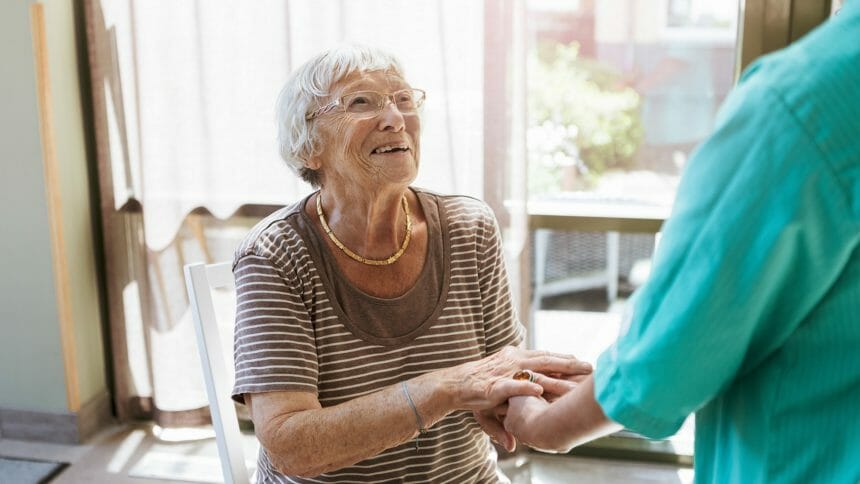
Despite evidence that residents within one of the best-known alternative nursing home models, the Green House Project, have fared much better amid the COVID-19 pandemic than those in traditional skilled nursing facilities, the nation’s adoption rate of this model remains relatively slow. In fact, currently only 300 Green House nursing homes exist nationwide, according to a new report from the AARP.
The report, written by Susan C. Reinhard, RN, Ph.D., FAAN, and Edem Hado, MPH, both part of the AARP Public Policy Institute, notes that one of the biggest barriers for long-term care operators in the development of these homes has been finding and maintaining attractive financing mechanisms. Although the cost of developing a Green House home is comparable with building a nursing home with private bedrooms, bathrooms and equivalent common space, achieving financial viability often requires operators to build more than one home. This allows the firm to spread overhead costs.
Regulatory challenges around building new nursing homes also serve as obstacles for potential operators, the report suggested. For example, certificate-of-need, or CON, laws — which are state regulatory approvals for building or expanding healthcare facilities in a given area — are known to hinder innovation in nursing homes by making it difficult for operators to get permission to build new facilities, the authors stated.
In terms of workforce, the report also noted that Green House homes typically offer higher-than-average compensation and more training opportunities for staff, and with that comes higher staff retention than traditional nursing homes. The homes, however, still face the widespread workforce challenges as in the broader sector in terms of recruitment.
To help expand the availability of this model, the report authors suggested that public policymakers work to offer attractive financial incentives to encourage more capital investments in innovative models.
“For example, policy makers should consider improving current public funding streams for [long-term services and supports], starting with Medicaid,” the authors wrote. “Although Medicaid is the biggest funder of nursing home care, it has the lowest payment rate among the payer sources for skilled nursing homes. Improving Medicaid reimbursement rates will help some providers balance their payer mix, making small-house homes more accessible and affordable for individuals in the long term.”
The authors also encouraged state policymakers to consider updating their CON laws and construction moratoria for nursing homes to allow for greater innovation in the marketplace. They also stressed the need to expedite adoption of key model features associated with quality improvement. For example, the authors noted, policymakers should promote more research and demonstration of how key features of the Green House model, including the “universal worker” staffing model and the use of private rooms, could be adopted by larger facilities.
“The coronavirus pandemic not only has shined a light on deep-rooted issues with nursing homes but has revealed serious cracks and inefficiencies in our nation’s LTSS infrastructure,” the authors concluded. “Now more than ever, policy makers have an opportunity to redesign and refresh the LTSS system to meet the diverse needs and preferences of current and future LTSS consumers and their families. Investing in evidence-based alternatives to traditional institutional settings, such as small-house homes, is a crucial step in the right direction.”
This article appeared in the McKnight’s Business Daily, a joint effort of McKnight’s Senior Living and McKnight’s Long-Term Care News.


